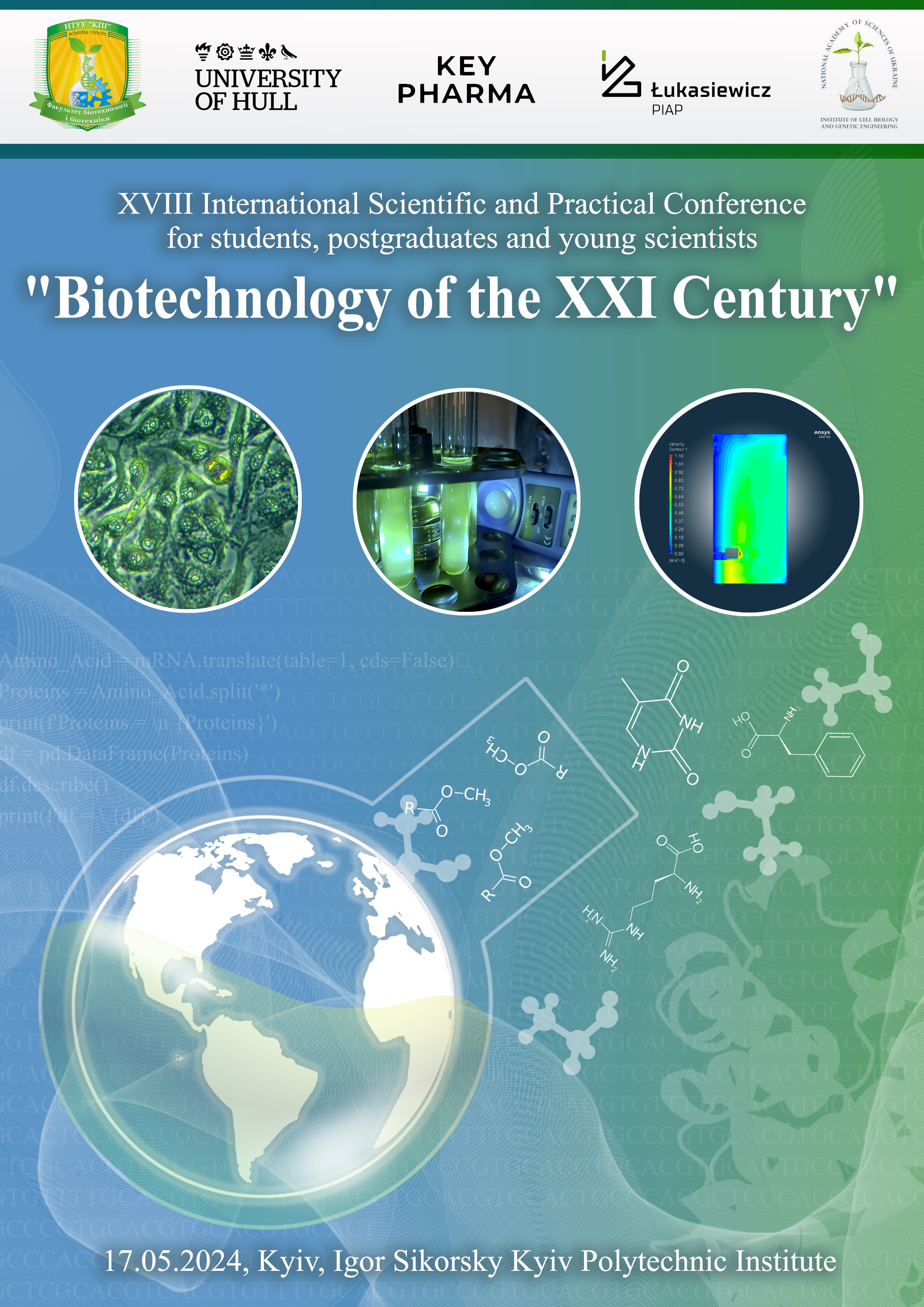ГЕНЕТИЧНА МОДИФІКАЦІЯ РОСЛИН ДЛЯ ЗМЕНШЕННЯ ВИКОРИСТАННЯ ФОСФАТІВ: МОЖЛИВОСТІ ТА ВИКЛИКИ
Ключові слова:
phosphorus limitation, genetic modification, transgenic plants, phosphites, environmental sustainabilityАнотація
This article discusses biotech solutions to overcome phosphorus deficiency in soil, a key challenge in agriculture. Strategies involve boosting phosphorus uptake in plants through genetic tweaks and reclaiming phosphorus from waste. Plants modified to use phosphites offer a promising way to cut reliance on conventional fertilizers, ensuring better yields, quality, and eco-sustainability.
Посилання
Khan F. et al. Phosphorus plays key roles in regulating plants’ physiological responses to abiotic stresses // Plants. 2023. Vol. 12, № 15. P. 2861. DOI: 10.3390/plants12152861
Samreen S, Kausar S. Phosphorus – Recovery and Recycling. London: IntechOpen; 2018. Chapter 6, Phosphorus Fertilizer: The Original and Commercial Sources; p. 81-94. DOI:10.5772/intechopen.82240
Cordell D, Drangert JO, White S. The story of phosphorus: Global food security and food for thought. Global Environmental Change. 2009;19(2): 292-305. DOI:10.1016/j.gloenvcha.2008.10.009.
Approaching peak phosphorus. Nat Plants. 2022 Sep;8(9): 979. DOI: 10.1038/s41477-022-01247-2.
Gold A.J., Sims J.T. EUTROPHICATION // Encyclopedia of Soils in the Environment. Elsevier, 2005. P. 486. DOI:10.1016/B0-12-348530-4/00093-X
Jacob J., Lawlor D.W. Stomatal and Mesophyll Limitations of Photosynthesis in Phosphate Deficient Sunflower, Maize and Wheat Plants // Journal of Experimental Botany. 1991. Vol. 42, № 8. P. 1003–1011. DOI: 10.1093/jxb/42.8.1003
Zhang Y. et al. Abscisic acid facilitates phosphate acquisition through the transcription factor ABA INSENSITIVE5 in Arabidopsis // The Plant Journal. 2022. Vol. 111, № 1. P. 269–281.
DOI: 10.1111/tpj.15791
Achary VMM, Ram B, Manna M, Datta D, Bhatt A, Reddy MK, et al. Phosphite: a novel P fertilizer for weed management and pathogen control. Plant Biotechnol J. 2017 Dec;15(12): 1493-508. DOI: 10.1111/pbi.12803.
Han Y., White P.J., Cheng L. Mechanisms for improving phosphorus utilization efficiency in plants // Annals of Botany. 2021. Vol. 129, № 3. P. 247–258.
DOI: 10.1093/aob/mcab145
Pasapula V. et al. Expression of an Arabidopsis vacuolar H+-pyrophosphatase gene (AVP1) in cotton improves drought- and salt tolerance and increases fibre yield in the field conditions // Plant biotechnology journal. 2011. Vol. 9, № 1. P. 88–99. DOI: 10.1111/j.1467-7652.2010.00535.x
Witek-Krowiak A, Gorazda K, Szopa D, Trzaska K, et al. Phosphorus recovery from wastewater and bio-based waste: an overview. Bioengineered. 2022 Jun 5;13(5): 13474-506. DOI: 10.1080/21655979.2022.2077894.
Stevens D.R., Hammes-Schiffer S. Examining the Mechanism of Phosphite Dehydrogenase with Quantum Mechanical/Molecular Mechanical Free Energy Simulations // Biochemistry. 2020. Vol. 59, № 8. P. 943–954. DOI: 10.1021/acs.biochem.9b01089
Thao H.T.B., Yamakawa T. Phosphite (phosphorous acid): Fungicide, fertilizer or bio-stimulator? // Soil Science and Plant Nutrition. 2009. Vol. 55, № 2. P. 228–234. DOI: 10.1111/j.1747-0765.2009.00365.x
Bertsch, F., Ramírez, F. and Henríquez, C. Evaluación del fosfito como fuentefertilizante de fósforo vía radical y foliar. Agron. Costarricense, 2009, 33, 249–265
Olivieri, F.P., Feldman, M.L., Machinandiarena, M.F., et al, Phosphite applications induce molecular modifications in potato tuber periderm and cortex that enhance resistance topathogens. Crop Prot., 2012. 32, 1–6. DOI: 10.1016/j.cropro.2011.08.025
Lovatt, C.J. and Mikkelsen, R.L. Phosphite fertilizers: what are they? Can you use them? What can they do? Better Crops, 2006, 90, 11–13.
White A.K., Metcalf W.W. Microbial Metabolism of Reduced Phosphorus Compounds // Annual Review of Microbiology. 2007. Vol. 61, № 1. P. 379–400.

